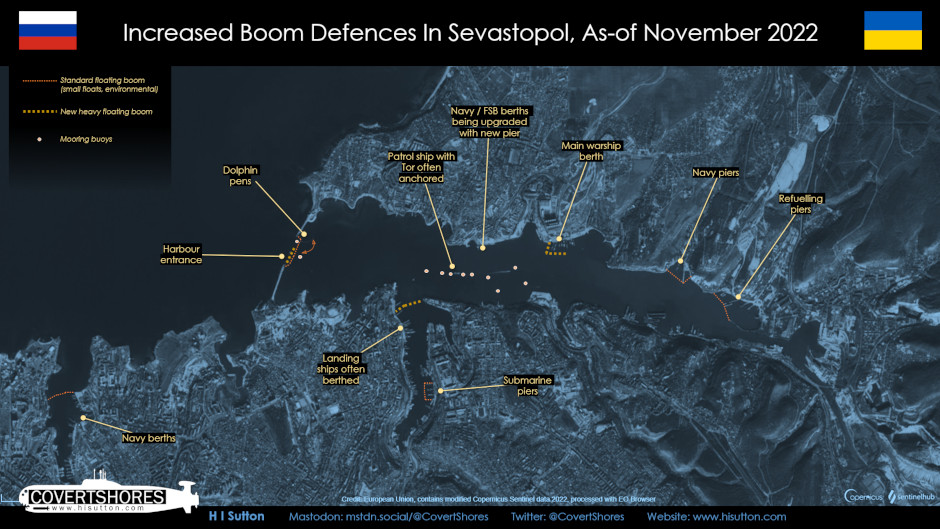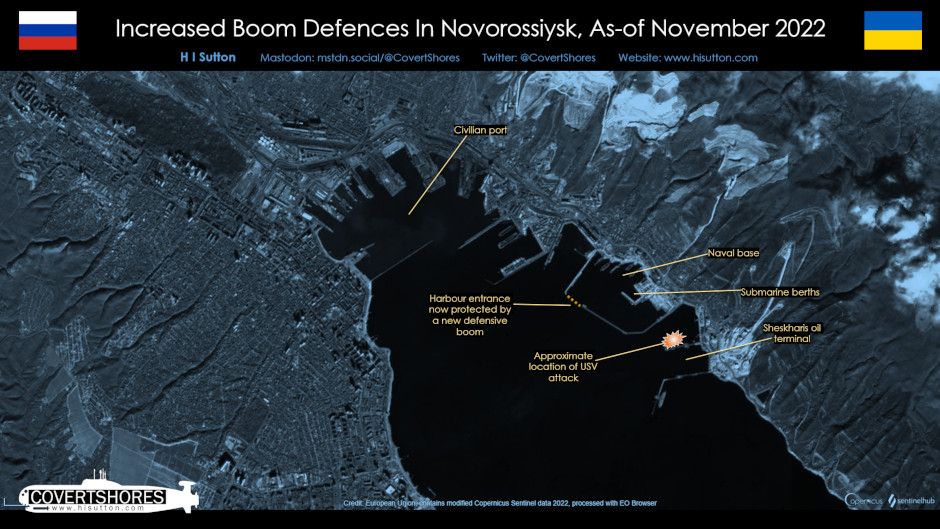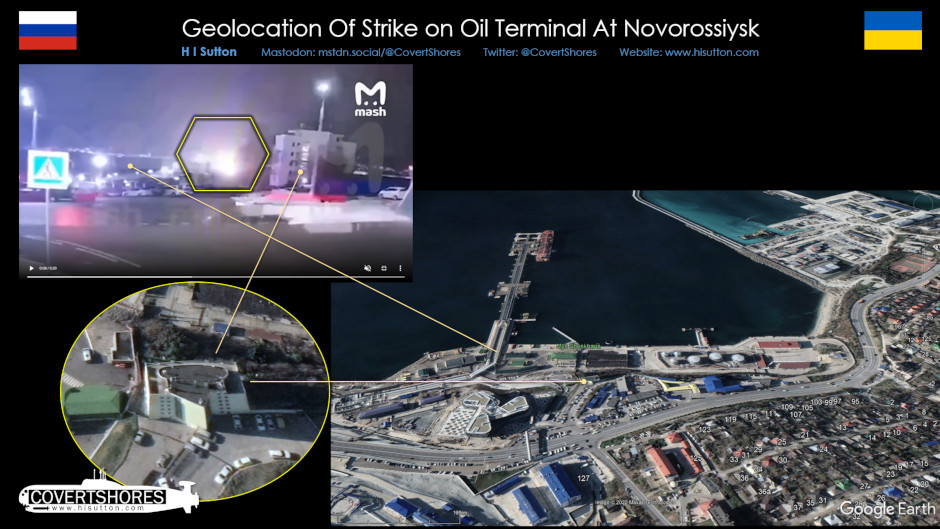Summary Of Increased Russian Defenses At Sevastopol And Novorossiysk

 Since Ukraine's attacks on Sevastopol on October 29, Russia has dramatically increased its harbor defenses. In the same way that the sinking of the cruiser Moskva may be the end of one chapter in naval warfare, the attack of the 'maritime drones' signals another. Although these drones have yet to inflict serious damage, Russia is forced to take them seriously. And they are having a dramatic effect on the Russian Navy's operating patterns and ability to dominate the black Sea.
Since Ukraine's attacks on Sevastopol on October 29, Russia has dramatically increased its harbor defenses. In the same way that the sinking of the cruiser Moskva may be the end of one chapter in naval warfare, the attack of the 'maritime drones' signals another. Although these drones have yet to inflict serious damage, Russia is forced to take them seriously. And they are having a dramatic effect on the Russian Navy's operating patterns and ability to dominate the black Sea.
Sevastopol
Sevastopol is now protected by two layers of floating booms at the harbor entrance. There are also newly installed booms across and around the main warship berths, and across Pivdenna bay where the submarine piers are. At the back of the harbor, where the refuelling piers are, ships are protected by yet more floating booms. Some of these booms were already present, mainly for environmental protection (to contain floating oil). However the operating procedures have changed and they are now routinely deployed.
Novorossiysk
Around November 11-15 a boom was deployed across the entrance of the naval base at Novorossiysk. This was just after the Ukrainian government published the range of their maritime drones (USVs) as 430 NM (800 km), meaning that Novorossiysk is within range.
The boom is similar to those in Sevastopol. On November 16-17 (exact date Tbc), a lone Ukrainian USV attacked the oil terminal adjacent to the naval base. It was possibly because of this new boom that the Ukrainians chose the oil terminal over the naval base. The oil infrastructure is also a strategic target however and much harder to protect with booms.
Related articles (Full index of popular Covert Shores articles)

 Ukraine's Maritime Drones (USVs)
Ukraine's Maritime Drones (USVs)
 Explosive Boats world history
Explosive Boats world history
 Narco Subs 101. w/Cutaway
Narco Subs 101. w/Cutaway

 Nerpa anti-diver UUV
Nerpa anti-diver UUV





